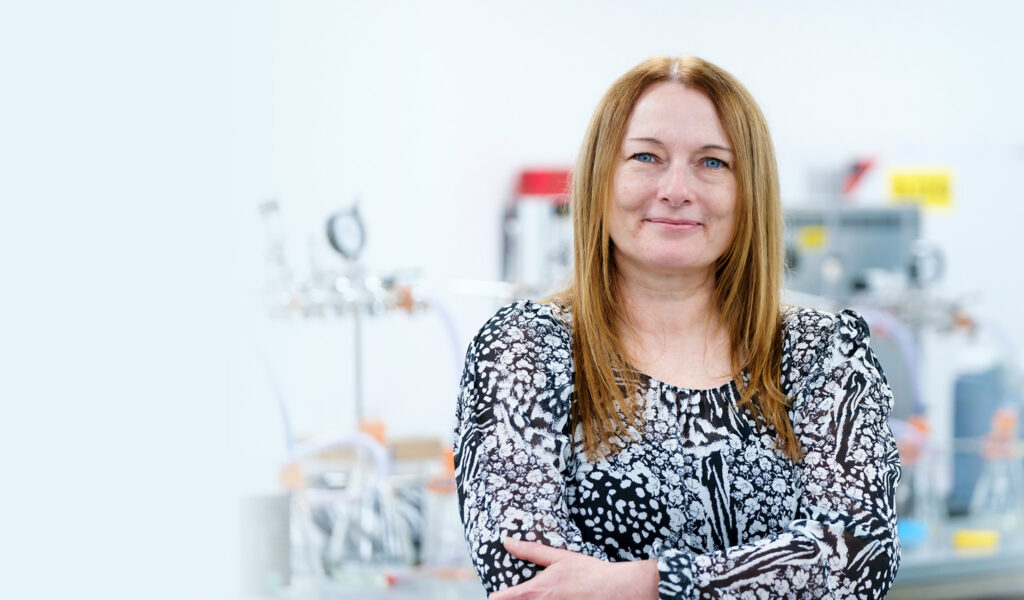Collaboration, novel product development and robust processes help to advance Fujifilm’s aqueous inkjet ink technology, explains technical manager Wendy Boyd. She is leading the aqueous inkjet R&D team in Broadstairs and Grangemouth, UK.
“Chemistry, jetting performance, application – you’re thinking about them constantly when trying to develop an ink”, mentions Wendy Boyd, Technical Manager

When our R&D team develops a water-based inkjet ink formulation, from chemistry to jetting performance to application, we do nothing in isolation. I love collaboration and teamwork – getting my team together, brainstorming ideas, and rising to the challenge.
At the start of a project, we will look at the chemistry and ask whether we have done something similar previously. Can we leverage our technology portfolio as an efficient approach to development, or do we need to create a novel product? If it’s novel chemistry, we take the next steps in development.
I ensure the whole team knows the importance of novel thinking and process so we’re all on the same path. Novel chemistry is exciting and challenging, but it’s important that the team understands that process is key to manufacturing products right first time, the Fujifilm way. A consistent pigment dispersion process, for example, is vital to robustness and batch-to-batch quality.
Reliable inkjet pigment dispersions
It’s how our team in Grangemouth, who are experts in polymer science, produced one of the best pigment dispersions available today. The RxD (reactive dispersant) aqueous inkjet dispersions they created perform consistently and reliably because of polymer uniformity between colors.
Once we have developed the chemistry, we ensure the ink performs in the inkjet head. Other groups, like the integration team, are experts in working with printheads, so we’ll work with their engineers to ensure optimized jetting. We also work closely with the application team, as they have a much better understanding of print processes, applications and how customers will use them in real life.
We have built a collaborative partnership with our teams in applied development, applied integration, and Fujifilm’s market research laboratory in Japan. Sharing knowledge development and project information enables us to investigate further and produce unique products. We supply our RxD dispersions to Japan for ink development, while the organic synthesis team develops the critical raw materials we need for our inks. Another team we work closely with is technical services in USA, where we also manufacture RxD inkjet pigment dispersions. Fujifilm invested over $47 million in new RxD production capacity at the Delaware site, in USA.
Digital ink development for textile and packaging
As for future digital applications, textile and packaging markets are areas for development. We focus on digital ink development that will perform and compete with older analogue technologies because we know customers in these sectors need faster print speeds, better quality, and performance, such as wash and light fastness, and a more comprehensive range of applications.
It is not just the challenge of developing novel products that I enjoy. We are constantly developing people and their skills and ensuring good recruits. As well as ensuring everyone on my team has a career path, I enjoy developing students through the student placement scheme I run, giving them meaningful projects and the confidence to own what they are doing. We are keen for students to come to Broadstairs, bring their ideas, and to create closer relationships with universities for longer-term novel chemistry materials, processes, and investigations.
I am also doing an MBA, so I can understand more about what other departments in Fujifilm are doing and other companies. For example, I want to learn how our commercial teams form a strategy, what other companies are doing strategically, and then think about how we can apply that learning.